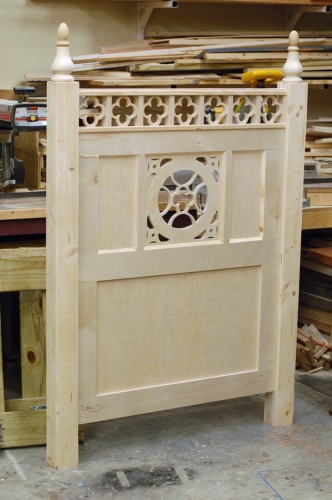The following is a continuation of a newspaper article about the property shop of E. L. Morse on Twenty-ninth Street in New York City. The article first appeared in The New York Times on May 8, 1904, and Mr. Morse’s property shop is long gone. I have previously posted the introduction, a bit on Morse’s career, a story of a fake fish he built and a run down of all the skills a prop maker must possess.
On the table of the shop is a country kitchen, not over a foot wide and a foot high. Yet in it is every piece of rude furniture which was to be put in the large kitchen on the stage. Not only in general appearance is the model perfect, but in all the smallest details. The kitchen table even has a top that folds back—it is hardly 2 inches long—just like tables which Mr. Morse says are found in obscure farmhouses in New England. The chairs, mantelpieces, window frames—all are exact. The whole thing was whittled out with a knife by the master of the shop himself.
“Why, that would make a wonderful toy for some child,” suggests the visitor.
“Yes, and I’m going to give it to one,” Mr. Morse replies. “I never thought about any one’s wanting such a thing until some one suggested it the other day. I guess I’ll not throw away any more.”
All around the room, on boxes and chairs, sit vases to be used in a musical comedy. They are modeled after some rare foreign pottery. The look of them is so frail that you forget they are not breakable, and tread gingerly in and out among the confusion of obstacles. This amuses the master of the shop.
“Oh, you can’t hurt these things,” he says.
To prove it he playfully cuffs one of the vases off the box and across the room. It falls and bounces up and down like a rubber ball. There is not even a dent, for it’s only papier maché, and you could play football with it half an hour without hurting it.
This article first appeared in the New York Times, May 8, 1904.







